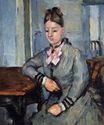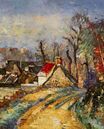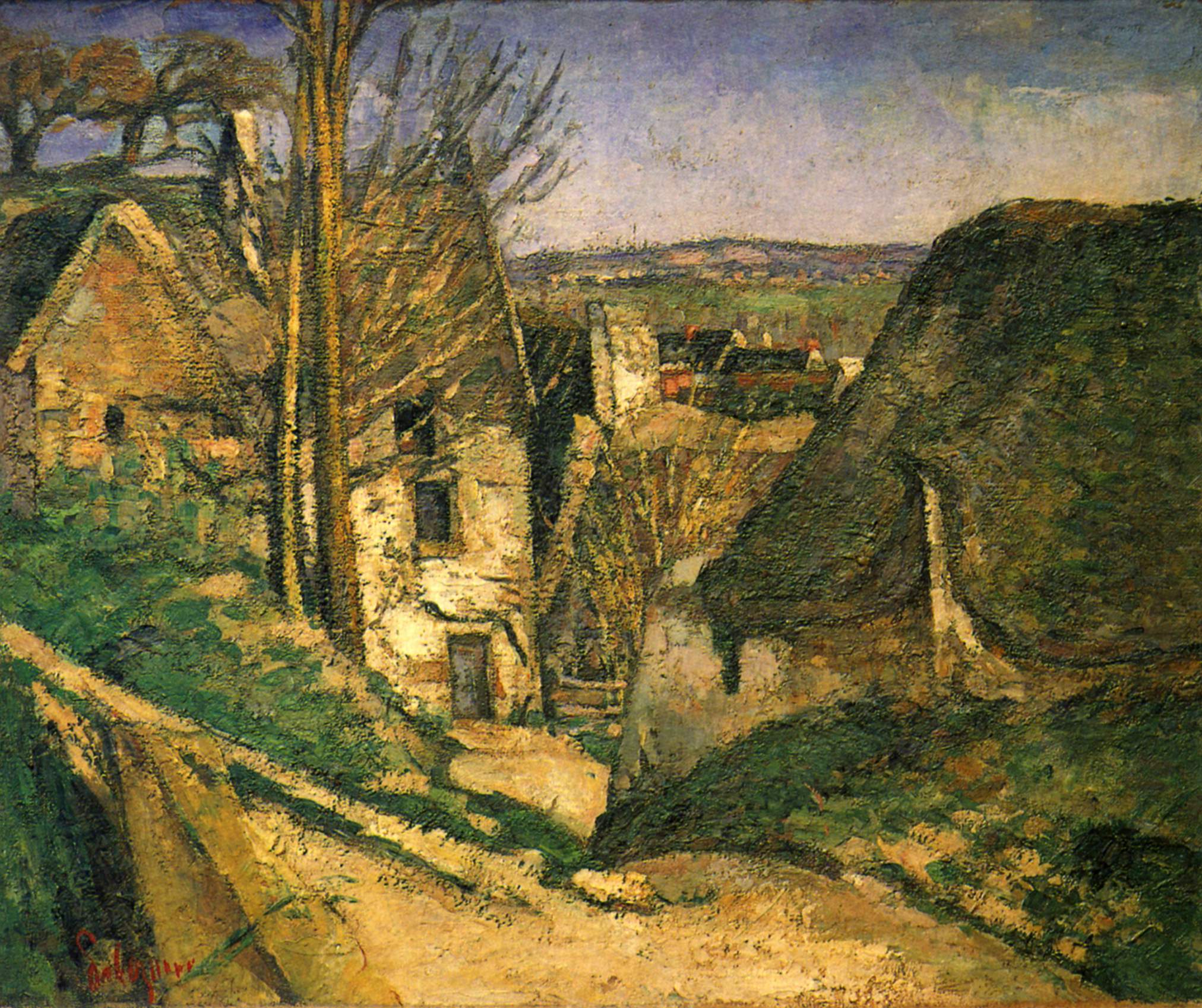Paul Cézanne - The hanged man' house in Auvers 1873
 |
 |
 |
 |
 |
 |
 |

The hanged man' house in Auvers 1873
55x66cm oil/canvas
Paris, Musee d'Orsay
<< Previous G a l l e r y Next >>
From Musee d'Orsay, Paris:
The Hanged Man's House was one of the three canvases that Cézanne presented at the first Impressionist exhibition in 1874. The influence of his friend Camille Pissarro, with whom he regularly worked in the region of Pontoise and Auvers-sur-Oise, is clearly perceptible. Compared to his early works, Cézanne has used the pale colours and broken brushstrokes of the Impressionists. He has also given up dramatic or literary themes for a simple, even commonplace subject. But The Hanged Man's House reveals Cézanne's peculiar brand of Impressionism.
The composition of the canvas is complicated. There are several strong axes leading away from a central point: a path which climbs to the left; another which leads down towards the centre of the painting; a bank curving away to the right; the branches of the trees angling off to the top of the painting. The planes are close set. The thickness of the grainy brushstrokes seems to 'plaster' the painting. The lack of people, the stiff, austere vegetation, and the cool colours help to create a strong sense of solitude.
Although the painting puzzled the critics when it was first shown, it was nonetheless the first that Cézanne managed to sell to a collector.